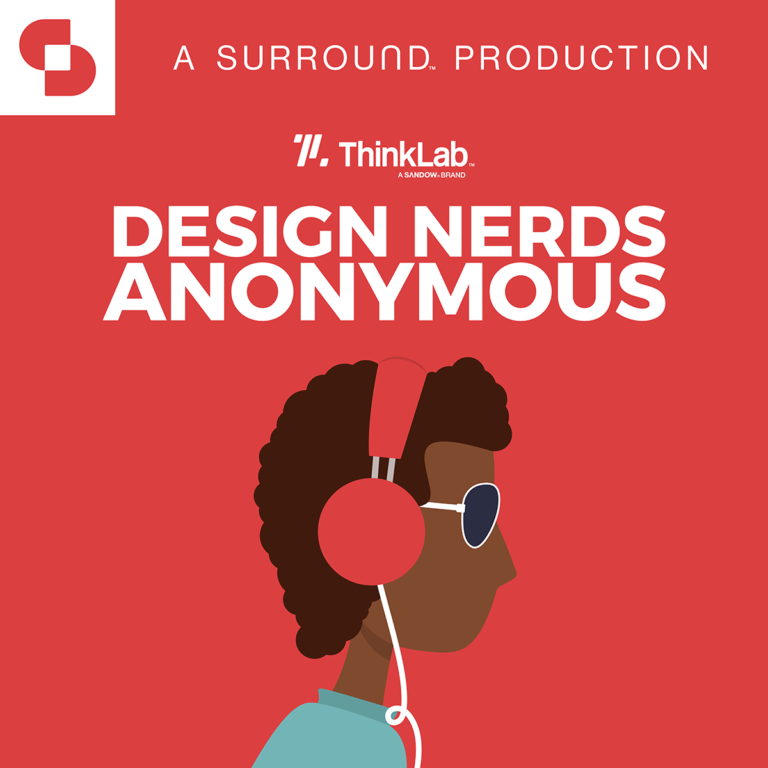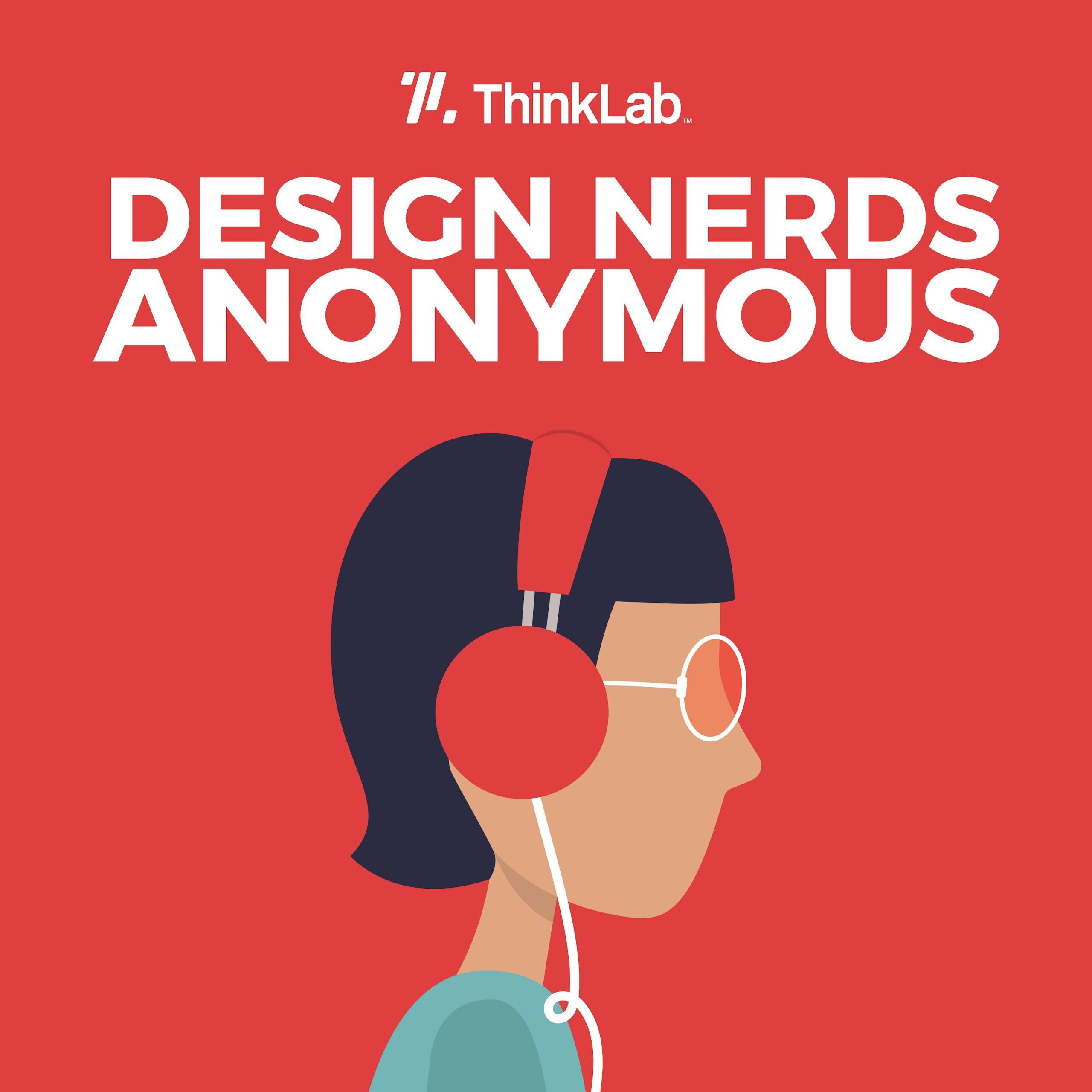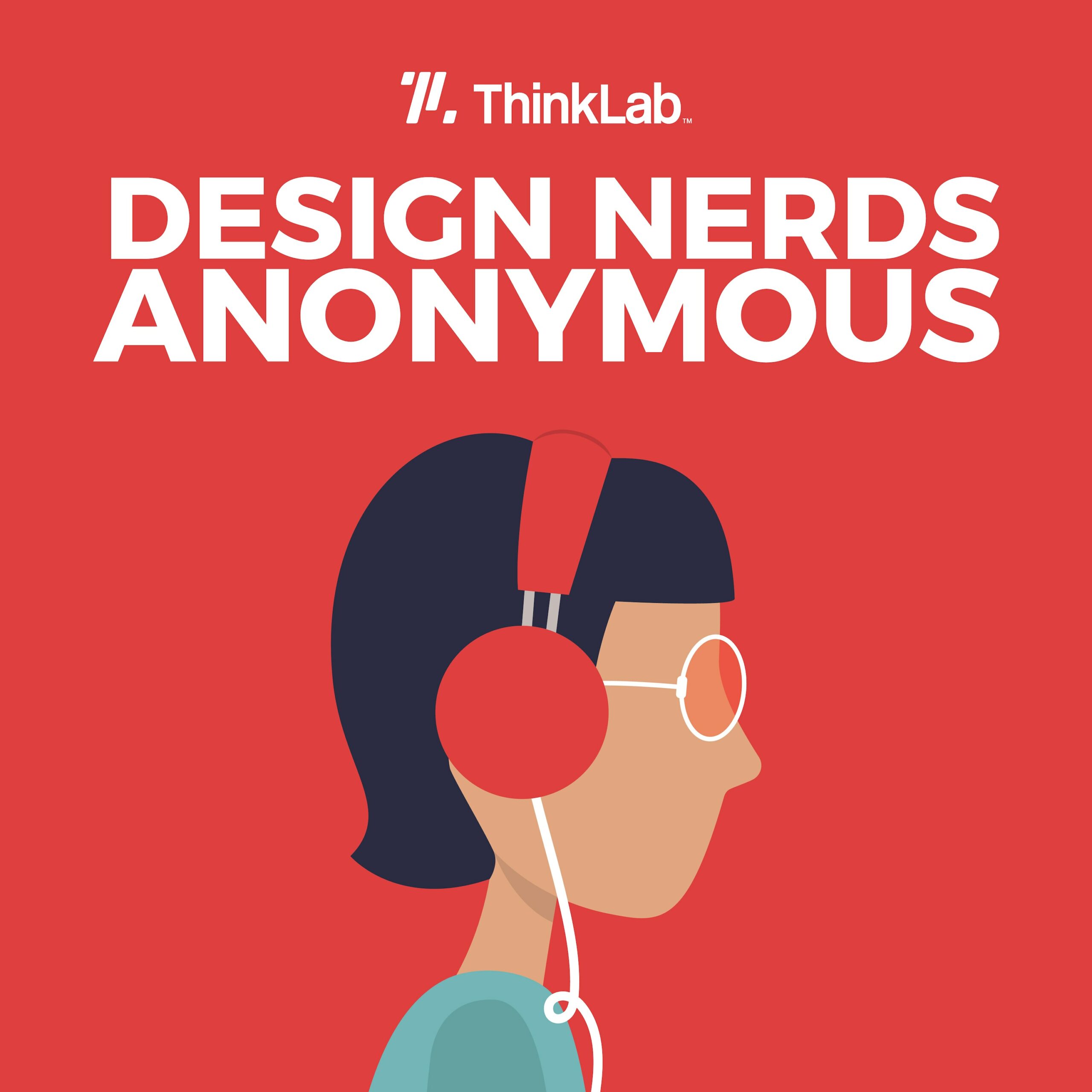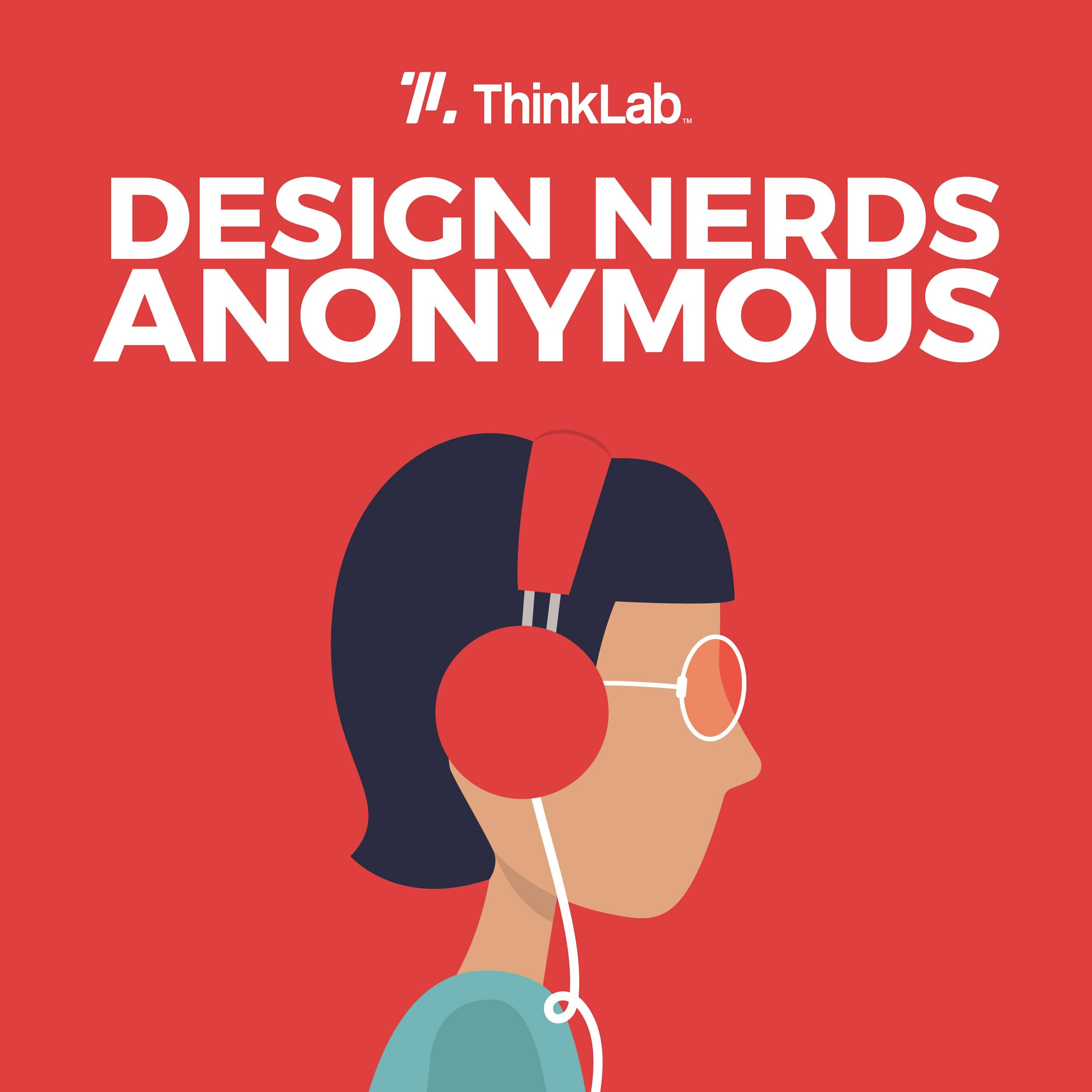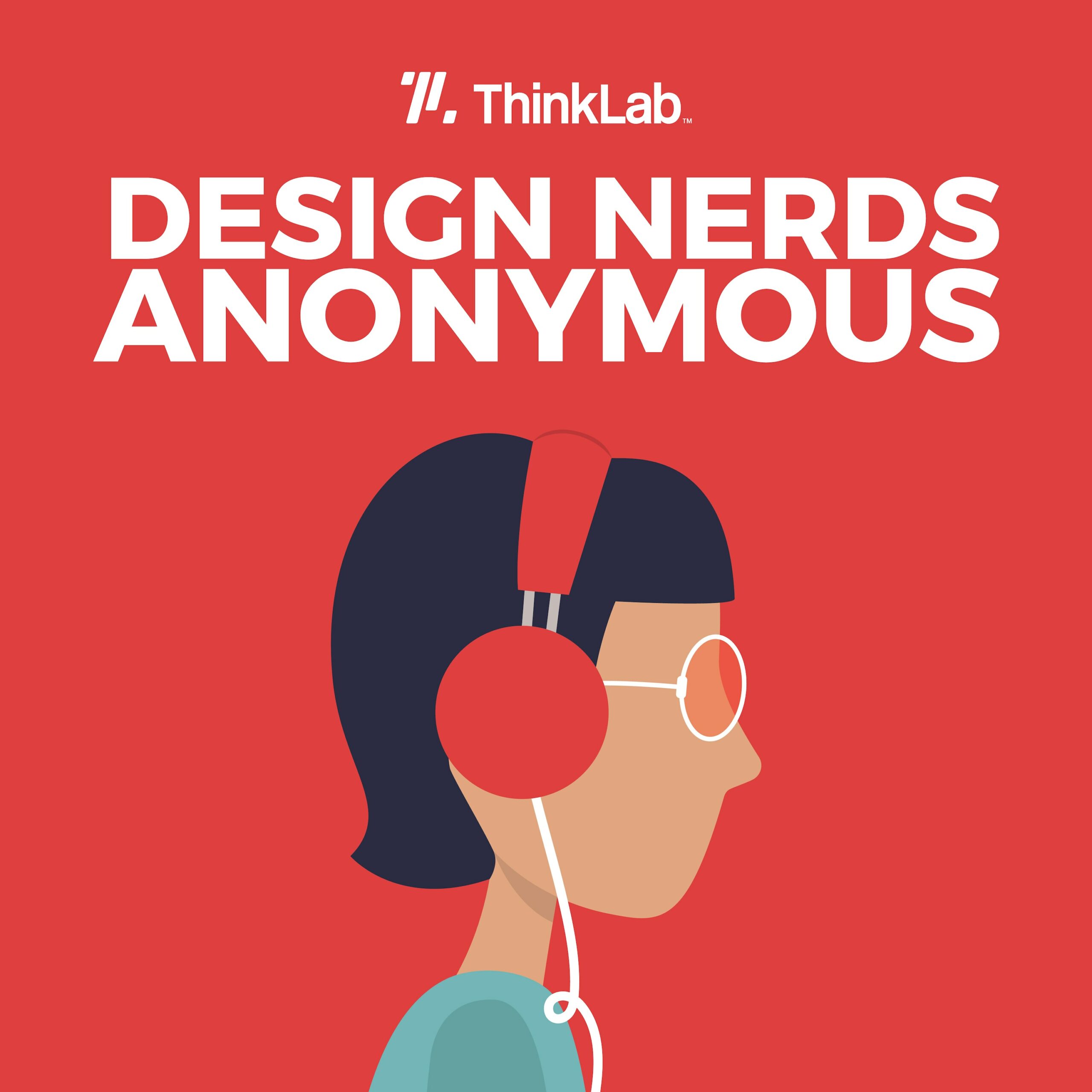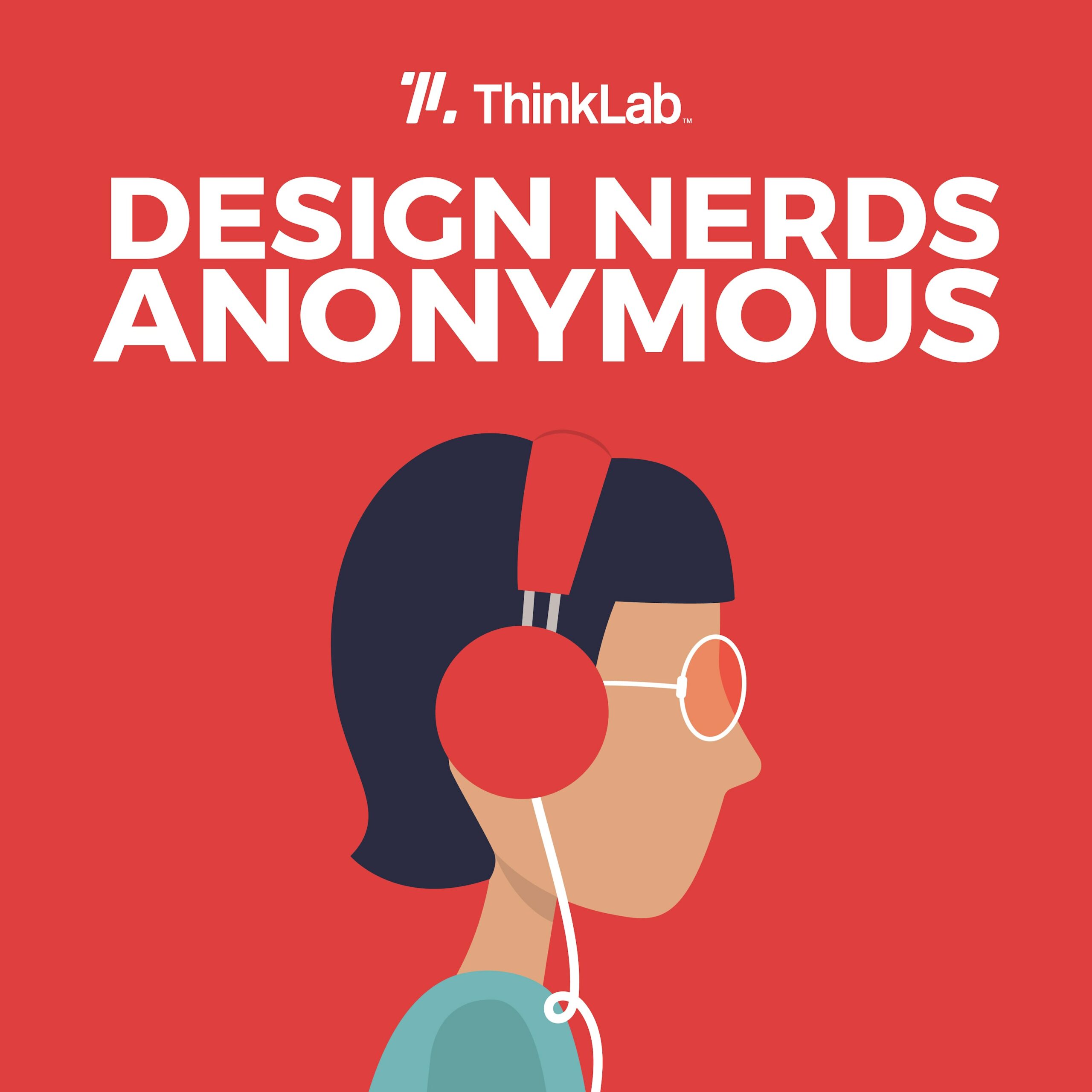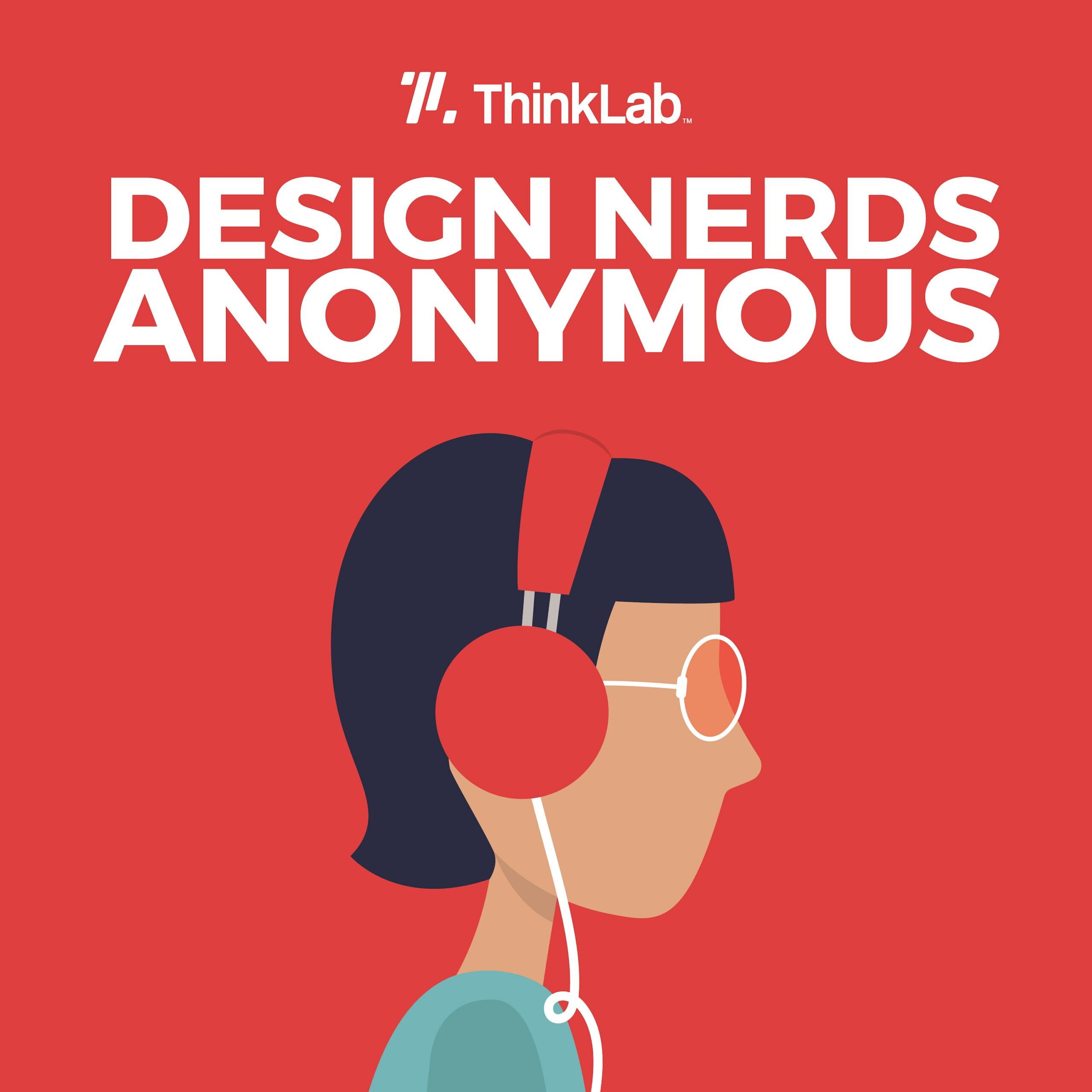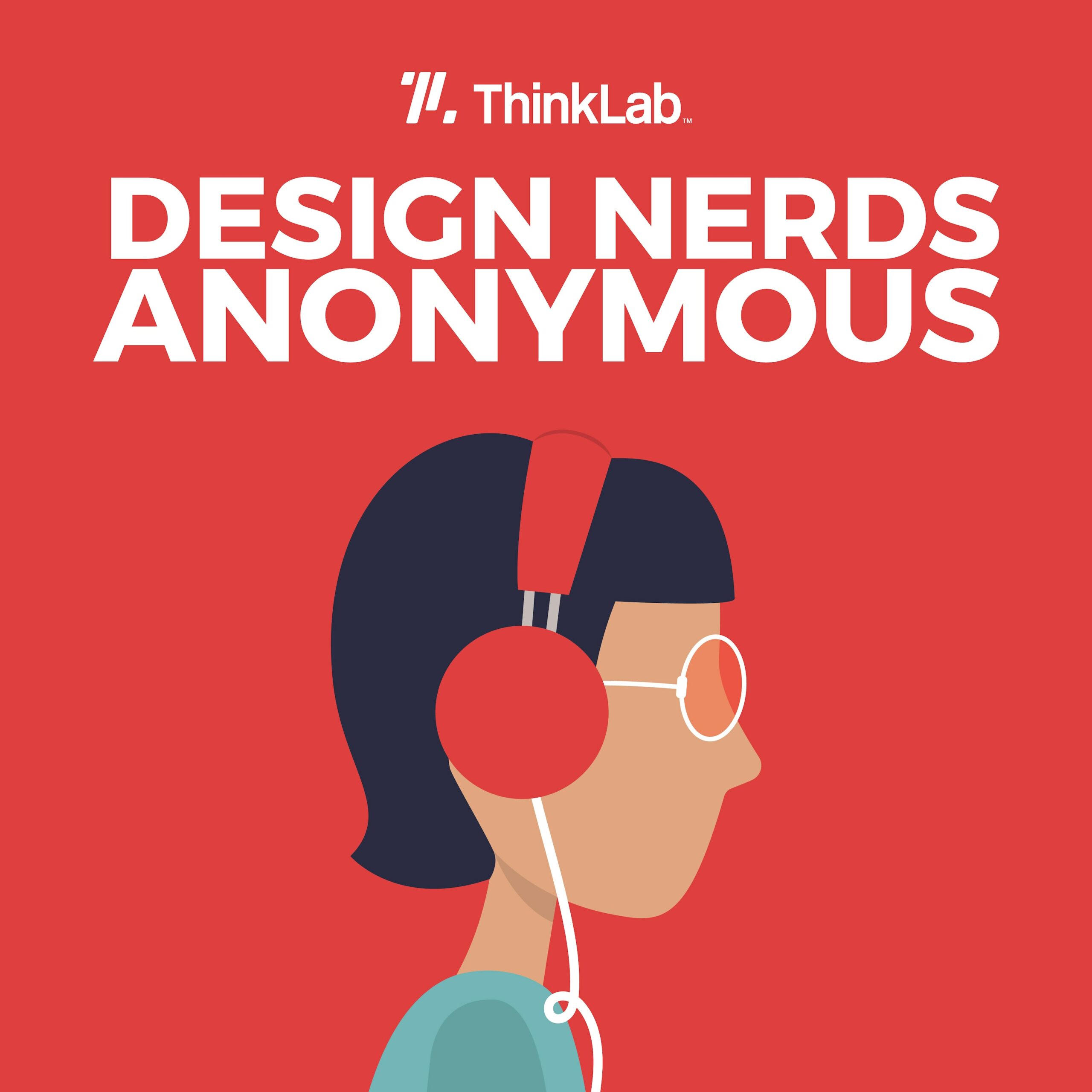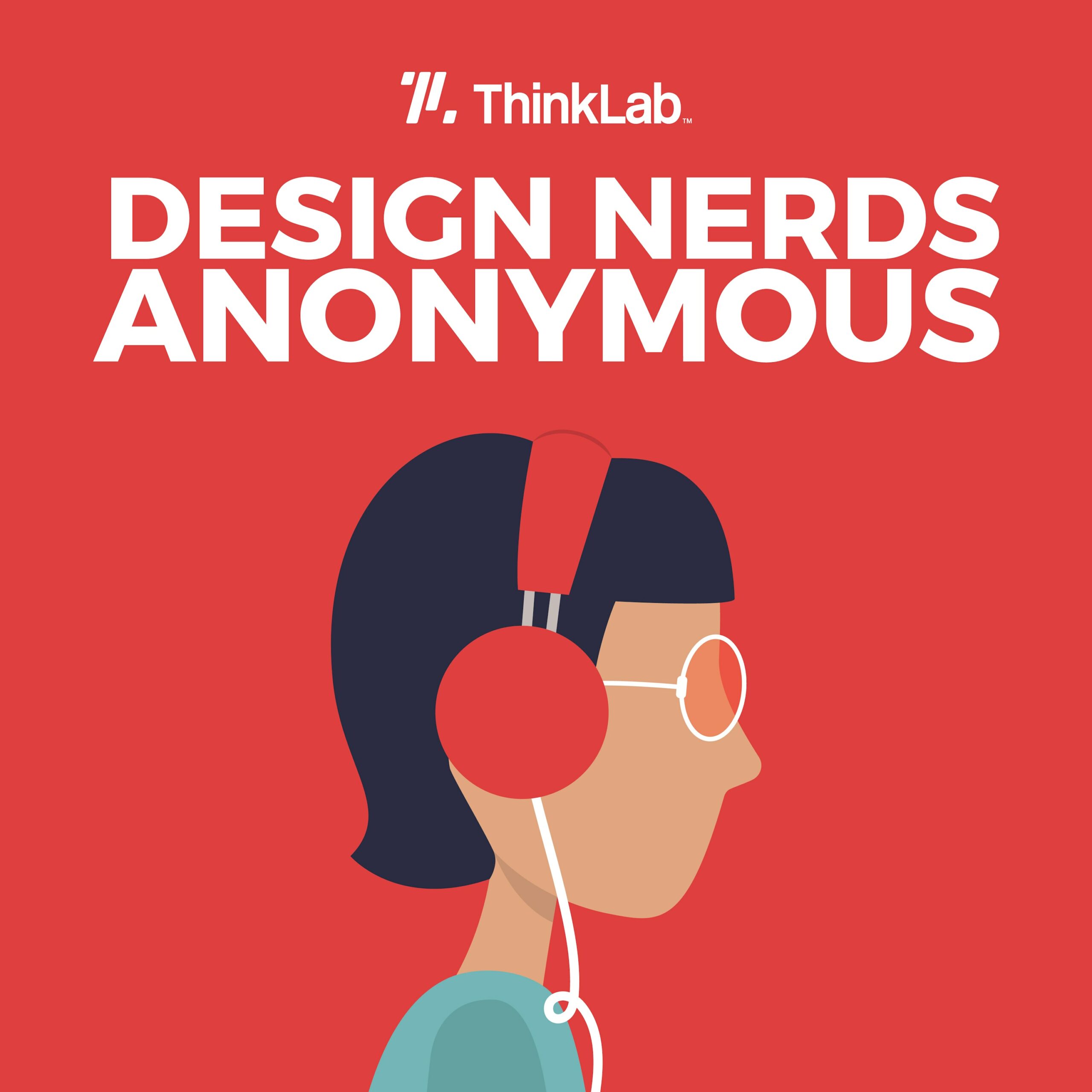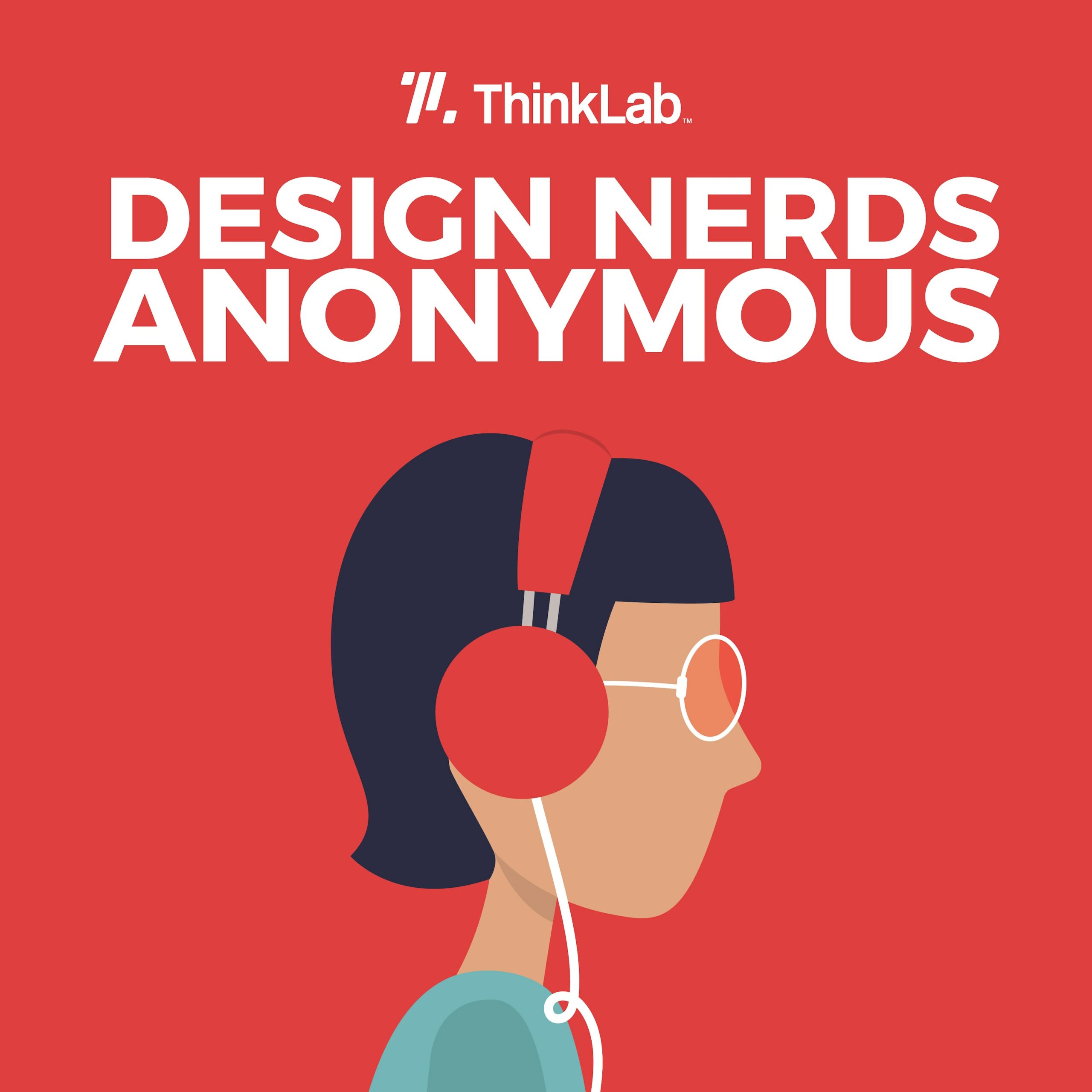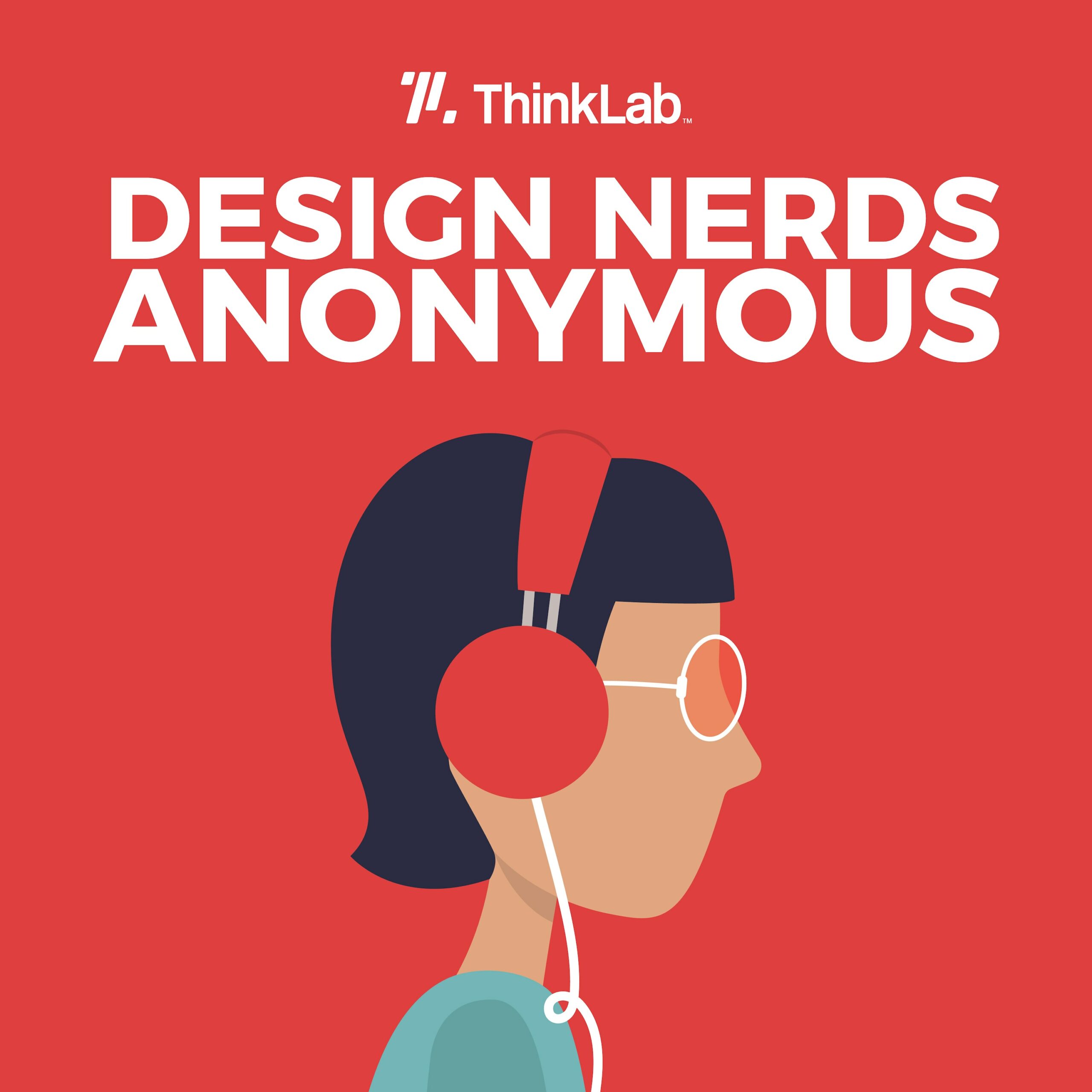The design industry is going hybrid. Our latest research shows that the production selection process is increasingly blending both physical and digital. In this episode, ThinkLab explores this intersection (what we call “phygital”) and the reinvention of the offline/online experience.
First, ThinkLab’s lead researcher, Erica Waayenberg, reveals the five key elements of product selection identified in our latest hackathon. Our next two guests are Matt Rebbe, design director for AECOM in Chicago, and Jenn Zella, co-founder and design director for CID Design Group. They discuss some of the benefits and challenges to working more virtually, including how client expectations have changed on in-person interactions.
Finally, we look to the automotive industry for inspiration on how to revamp a static, traditionally analog industry by integrating digital. Ryan Keeton, co-founder and chief brand officer at Carvana, describes the company’s approach to reinventing the car-buying process, keeping the customer experience at the forefront.
In this episode:
[4:22] Erica explains her “aha” moment after digging into ThinkLab’s hackathon findings.
[12:17] Jenn describes how manufacturers could help designers through enhanced virtual product demonstrations.
[15:30] Matt stresses the value of communicating clearly as a designer, of being able to describe your vision.
[29:13] Ryan discusses the importance of transparency in developing customer confidence in Carvana.
Connect with our interviewees on LinkedIn:
This season of Design Nerds Anonymous is brought to you by Mannington Commercial, Keilhauer, theMART, and NeoCon, companies doing big things to move the design industry forward.
Finally, thanks to Hannah Viti, our audio producer, and Blue Dot Sessions for providing the music for this episode.
Design Nerds Anonymous Season 3, Episode 1:
The Future of Product Specification
Amanda: [00:00:00] The physical and digital worlds are coming together more seamlessly. But what exactly does that mean, and how might product specification as we’ve always known it change?
In season three of this podcast, we’ll be tackling that question with the goal of helping you and your business prepare. Now, ThinkLab data suggests that architects and designers have 26 times the specification power as the average American consumer has buying power. And when you get into the Interior Design Giants of Design, that number can be as high as 111 times.
That statistic should be empowering for architects and designers to consider their sheer power in how their decisions will shape the future. But as we know all too well, our world is changing. ThinkLab spent the last [00:01:00] six months exploring the future of product specifications, and we used our findings to develop season three of this podcast.
In each episode, you’ll hear us tackle one key challenge from our research. First up: the future of product specification.
Matt: There has to be a way to explore these products virtually — because it’s not going to go away. This isn’t something that next week it’s just going to go back to the way it was.
Amanda: Meet Matt Rebbe, design director for AECOM in Chicago. He and a handful of others will be helping us to really think about the implications of this virtual world on how product is specified.
This episode consists of three chapters. Now in chapter one, you’ll hear from ThinkLab’s very own lead researcher, Erica Waayenberg. In chapter two, we’ll hear about our industry shift to hybrid. And what’s here to stay from two of our 2022 Interior Design Giants of Design. And finally, in chapter three, we’ll hear [00:02:00] tangible advice about how to integrate digital and physical, from another industry.
Welcome to season three of Designer Nerds Anonymous, the podcast that sparks curiosity at the intersection of business and design. I’m your host, Amanda Schneider, founder and president at ThinkLab, the research division of SANDOW Design Group and sister company to media brands you know and love, like Interior Design, Metropolis, Luxe, and more. At ThinkLab, our passion is sharing inspiration for your business, fuel for your design process, and connection with people and ideas for positive disruption.
So, thanks for listening. We’re glad you’re here. Now, let’s dive into chapter one.
Erica: My name is Erica Waayenberg, and I lead research and content development here at ThinkLab. My background is actually as an interior designer, so I get really excited whenever our research intersects between the worlds of [00:03:00] architects and designers and the ecosystem that surrounds it, which includes many manufacturers and other parties within the industry.
Amanda: Now we’ve invited Erica to bring some color to those six months of research that I mentioned in the intro, as part of our most recent hackathon.
Erica: A hackathon is a generative research process where you’re applying design thinking to a business challenge. And this one in particular was about product specification in a hybrid era.
The hackathon involved a series of intense mapping sessions with architects and designers and other multidisciplinary functions throughout the industry.
Amanda: And I really want to underline this point, because these are the key topics throughout this season.
Erica: Across these mapping sessions, we’ve uncovered five key elements to the product selection process that also happened to be areas of significant investment for companies, brands, product manufacturers who are reaching into this [00:04:00] interior space. The five areas were showrooms, resource libraries, events, product presentations, and that B2B architectural and design sales rep.
Amanda: So without going too deep in the data, Erica reveals her biggest high-level “aha” that she hopes comes through this season.
Erica: Early on, we really started to see a big migration of behaviors across the product selection process. This was something new that we hadn’t seen. Historically, our industry has tended to be either analog or digital, but not typically very hybrid across activities.
So now what we’re seeing is that there isn’t a single activity, in any of those five categories that we just mentioned, that doesn’t include a digital component. So what that means is that those elements that were previously completely analog — like a showroom tour, like product [00:05:00] presentations, for instance — those elements are going to need to adapt in order to afford a digital access for those types of experiences for both architects and designers and their clients and constituents.
Amanda: Now many of us hear about digital, digital, digital, but throughout this season, we’re going to bring this to light with examples and stories from both within the industry and beyond to help inspire new thinking for your business.
Erica: This is in no way all figured out or done. We’ve got a long way to go. In fact, if you are a textile or a flooring company, that might look vastly different than what’s needed for a material lab for a furniture manufacturer.
So I think that all five of these categories are going to continue to evolve. But what we do know is that all of them will benefit from including a digital component to their analog, current, existing models.
Amanda: So as we dive deeper into what or why efficiencies and digital changes are needed, I want to share a statistic. [00:06:00]
ThinkLab data collected consistently over the past year suggests that three out of four firms expect to remain somewhere on the hybrid spectrum. This will cause a hybrid butterfly effect of shifts that will affect the way product has historically been selected.
To share some perspective direct from the source, in chapter two, I’m thrilled to introduce two of our Interior Design Giants of Design firms and their perspective on what’s changed — and what change is here to stay. Meet Matt and Jenn.
Matt: I’m Matt Rebbe. I’m the director of design for interiors in our Chicago practice at AECOM.
Jenn: I’m Jenn Zella. I’m a co-founder, and also act as a design director, for CID Design Group.
Amanda: We invited them to discuss their own approach to the future of work within their firms. And what you’ll hear from both of them is that while physical space is still where work gets done best, hybrid is here [00:07:00] to stay.
Matt: We, as the creative class, are really much better together, in person, when it comes to innovation and driving sort of our design culture and needs of our clients. So, how that translated to my team specifically in Chicago, we basically announced, three days a week, we would like to see the team here. Mondays, we want everybody here, so we can have a kickoff to the week, get things started, have a staff meeting, things that sort of get us back to a sense of normal.
The culture of being together is really important. We see the quality of the design work, the design conversation, how we get things done, is better than it is when you’re completely remote. Not that it couldn’t happen, but there’s just much, much more when you have the visual of people together.
Amanda: CID Design has always been built on a remote model, even prior to the pandemic.
Jenn: My second full-time employee — from when we very first began the firm — has been a remote and [00:08:00] virtual employee from day one. For 20 years, we’ve been at this to some extent; a lot of the big global firms have been focusing on, on all of these best practices for some time. It’s just at the scale that we’ve been forced to do it is new.
In general, I will say that it is going very, very well. And we just finished our annual planning for 2022. And, um, it’s been kind of exciting to start really fine-tuning some of the things that I think can continue to make us thrive even better in this sort of environment.
These last almost two years now at this point have been very interesting. I’m sure we would all agree with that. It’s been a time that has made us very acutely aware of what’s really important. And I think that that has called to attention the need to adapt as a company, to adapt our practices, [00:09:00] to meet everyone’s massive shift of mindset. We can’t change that, so we have to adapt and evolve as a company.
Amanda: We asked Matt and Jenn which of these experiences of the last two years are here to stay for the design industry. Here’s their response: Clients are comfortable working remotely, and this will force firms and our industry to innovate faster.
Matt: The thing that is going to stay is that clients have become comfortable with our ability to have this type of interaction like we’re having right now. I don’t have to get on an airplane or spend two hours in the car or drive across town to have a 45-minute conversation anymore. So you can’t expect that every client’s not going to be virtual to some extent, just like we are. But that also drove, probably, an innovation in process around how we all work, because we had to quickly figure that out.
Quite frankly, it ripped off a big [00:10:00] Band-Aid within our whole industry of, how we can drive and innovate faster? So I don’t think that’s systemic to one organization. I think it’s across the board, you know.
Jenn: Yes, I totally agree. Clients are more willing than ever before to interact with us virtually. And although some of our travel has come back, I do think what’s here to stay is that there will be limited travel, more limited travel going forward then prior. It’s forced us to learn better practices of how to present, remotely, the design intent successfully to the client without being there in person.
I know, Amanda, a lot of your manufacturers are always looking for guidance as to how they can support our industry best. All those tools that help us to virtually present better and have better imagery of all of the products — because we’re not always together in person, touching and feeling — that really helps the design process tremendously. And so, [00:11:00] I do believe that that’s certainly one of the big topics that’s here to stay, and can only make us better as we go forward, and more efficient as we move forward together.
Amanda: And this is where the idea of efficiencies of digital tools comes in. Here’s why: ThinkLab data suggests that designers are overwhelmed and reps are struggling. The average rep in our industry once spent nearly 80 percent of their time face-to-face. And now — yes, even now at the time of recording — the average rep only spends about 10 percent of their time face-to-face with their clients.
So what can reps do? Here are some of their suggestions. Number one: Think about what really needs to be in person.
Matt: There are some updates where it doesn’t need to be in person. Does the whole team really need to know that Formica dropped two laminates and added one? I don’t know. It’s really the, sort of, the big launches, the, sort of, half-yearly [00:12:00] things that would have happened in the past, that we’re trying to get to.
Amanda: Number two: Create hybrid equity through virtual demonstrations. But they challenge us to think beyond the traditional lunch-and-learn and help them better visualize product remotely.
Jenn: I think that there would be a huge opportunity — even for the team that is here, quote unquote, “in” our workplace — for people to be able to engage in events just from their desk versus having to, you know, all cram into a conference room or into a studio — it’s appealing for both the virtual workers and those in our studio.
There is some equipment that we’ve added to our studios physically that has helped us tremendously in the last year and a half. And we’re expanding that equipment through all of our conference rooms, into all of our studio tables, and essentially it’s remote-viewing camera capability so that there is a camera mounted over our layout tables, [00:13:00] over our conference tables, to show a bird’s-eye, flat-lay view of the studio table.
So that those who are collaborating virtually — with the team that could be in person, if truly hybrid teams — can see in high resolution in real time, you know, what’s being laid out. Even the remote viewer can zoom in and out to see things in greater clarity.
I’m just sitting here thinking about how wonderful it could be for manufacturers to set up a lab like that in their workplace, to where they can offer virtual demonstrations of new product to teams. And certainly those things could be recorded and just shared. There’s been a big gap in the last year and a half of getting new materials in front of our design team. I think that that could be a great way to, to really show, quickly, new products and engage with design teams.
Matt: During NeoCon, Steelcase had this really great sort of 3D thing where they were connected back to Grand [00:14:00] Rapids. You walked through it; there was a person with a camera: “Oh, lift that up, show me what that looks like.” It was like, literally going through things with — like you were there, once you figured it out. And I’m like, you should be doing this all the time. This is fantastic.
This is what I’m talking about, you know, tune it to the client, tune it to what they need. Pre-build it there. And if they really have to touch and see, then we’ll send them samples, or we’ll get them to a dealer, something. As I go forward, more so on the furniture than the material side, there has to be a way to explore these products virtually, whether it’s a 3D walk-around of it — what it is, I can’t quite put my finger on yet. But there has to be a way to do it, because it’s not going to go away. This isn’t something that next week it’s just going to go back to the way it was.
Amanda: Number three: Dear reps, work together, across regions, across brands, and focus on empowering your designer to sell on your behalf.
Matt: I can say, having worked on a project [00:15:00] with three offices the first part of this year, that’s a challenge of, how do you get that same glass sample to three different teams. And so we really pressed hard on our local reps to say, Hey, this is what’s going on. We have this big team, it’s extended. We need your assistance with your reps in those other markets, so that we’re making the right decisions around product selection. And they did.
I would say part of it still goes back to us as designers, as being salespeople. Like, you have to be able to iterate your vision. I think even more so now than before: You have to be able to vocalize it. You have to be able to describe it. They have to sell me the chair — I have to sell 700 of them. OK, I still need to see these samples at some point. I need to put that piece of tile on the floor and make sure that the light reflectance you’re telling me is there is really there.
And so that’s how we’ve had to approach it: Put this big box of materials together — not a material board, like you would traditionally think in the past — but physical [00:16:00] samples. Because they’re not there with you along that journey, when those products were being selected, like they might’ve been before, you know, at an interim meeting of “Here’s three tiles, what do you think?” They’re not getting that touchy-feely part that we’re getting on our end.
Amanda: Number four, and perhaps their biggest challenge to the product side of the industry: Inspiration is all around us. Look for inspiration from the B2C brands.
Jenn: I feel like our B2B manufacturers learn a lot from looking at B2C retailers. Even think about some of the fashion retailers that have done such a great job, because people haven’t been able to get into stores to try things on. And so you’re seeing much more video footage of models wearing the clothes, so you can really see how the fabric moves, or see the texture, or somebody sitting in that chair, or different-size people sitting in chairs, to see how it fits and demonstrating the products.
[00:17:00] I think that there’s a lot of lessons to be learned there that the B2C retailers — they show their products from all different angles. They show them with or without backgrounds. So you can see them in a setting, in context, and then sometimes, the all-white background. Or, you know, images on the site that you copy and paste it in; it already has the background removed. Those types of just simple things like that alone help so much.
And then also the transparency of pricing. I think that’s why we all enjoy shopping retail sites, because the pricing’s right there. It’s in stock, it’s not in stock — it just takes a lot of the mystery and a lot of the effort out of it. I don’t ever want us to think that there’s not still a need for reps to provide pricing and information or whatnot, but there is a certain amount of information that should be at our fingertips and should be more accessible. That would help us all be much more successful.
Matt: Even if I can, Jenn, with the fashion reference — when you go to a website, for a fashion company, it’s on point. And a lot of [00:18:00] times, the way you navigate, how you get through it: Like, what do you have in purple? Like, boom, boom, boom. And with the furniture side, on the contract — of what we do, it’s just not there.
And for us as end users of, I’ll call, the virtual world, you look at this quality of my experience over here of being able to get to the answer I need in, like, five seconds. Whereas over here, I’ve got to spend the better part of an afternoon to figure out if black comes on that arm. Like, how is that happening right now? I don’t understand.
Amanda: All of this lack of self-serve visualization actually plays not only to wasted time, but it really hurts our sustainability story. So their last piece of advice for manufacturers? Number five: Consider not only the ease of finding your product, but the potential environmental impact if we were to make product selection easier.
Jenn: The other thing about being better and doing good — there is so much waste that is transpiring, [00:19:00] because these tools are not good. Often, we don’t have good imagery; we can’t touch and feel and see and sense the product. We’re shipping so much stuff everywhere, and not just to the studio and not just to the client, but to the designers as well that are in their individual workplaces.
And so there is such an opportunity and such a great purpose behind having better photography. I really think it could reduce such a big carbon footprint: all the waste, all the fuel, the transport, the cardboard, the packaging. The sample shows up broken. You gotta reship the sample. You know, it’s a lot. There’s an awesome opportunity for us to all be better on that front.
Matt: Want to add that it has to be a lot easier than it is today. It just has to get easier. It has to get better. We’re all virtual babies here. We all know how this works in the rest of the world. Just because it’s in the contract market doesn’t mean I don’t see the Home Depot website as a reference. So if all these other organizations can nail it, and can sell me [00:20:00] things in a way that I can do quickly and virtually, then the rest of these businesses should be able to do that as well.
Amanda: And speaking of making product selection easier in this virtual world: In chapter three, we’ll take inspiration from another industry. It can take the pieces that may feel prickly and remove emotional baggage, by looking outside the industry to someone else who’s already figured it out. Meet Ryan, one of the co-founders of Carvana.
Ryan: My name is Ryan Keeton, and I’m the co-founder and chief brand officer at Carvana.
Amanda: Our interest with Carvana is a lot of designers say, well, we could never buy furniture or specify textiles without sitting in the chair or touching it and feeling it. But what fascinates me about the journey you all have been on is, arguably, sure, if you’re buying a chair, you’re not going to buy it without sitting in it. But even more so, you’re not going to buy a car without actually having driven it. Yet you all have successfully really digitized the first [00:21:00] 90 percent of that buying journey. By the time you are test-driving that car, you’re already pretty far into your purchasing journey.
And this episode is really on the future of product specification. And we’re looking for inspiration about how you took a very analog industry and helped to find a digital way to buy a car.
Ryan: Buying a car is a very considered purchase. It’s the second-most expensive purchase a person makes outside of a home.
It also is a very infrequent purchase. So it happens, let’s say, once every four to five years on average. And the traditional way of buying a car, there’s not a lot of transparency in that process, and it is quite analog. People nowadays spend a good bit of time researching cars online, but traditionally, over the last 75-plus years, you still have to go to the dealership. You have to physically walk around and look at limited selection. You have to take a test drive that really [00:22:00] boils down to taking four right-hand turns, that lasts 15 minutes. And there’s the salesperson behind you saying, don’t go too fast on the highway. Then, you go through that long and somewhat frustrating process to buy it.
Amanda: There are so many parallels. When you say this was not an ideal buying experience, there’s not a lot of transparency. It was traditionally analog. The test drive wasn’t really realistic along the buying process where you had to spend a lot of time and money — I think if we look at something like buying furniture, especially in the corporate contract segment, a lot of those things would be true. What is the role of design in redesigning that experience?
Ryan: Design is a hugely important aspect of everything that we do across all of Carvana. We have the UX and product designers, and user interface designers, and brand designers and experience designers, and plenty of others that I’m missing. So apologies to the rest of the team there, but all of them are working to create this uniquely digital and physical experience, focused on the customer and power through, through data and technology. [00:23:00] Designers that are looking to come in and try to come up with new, cool digital experiences — or, how do we enable a better user experience through our platform of buying or selling a car to us? I think there’s a lot of opportunities, and we’re just looking for amazing design talent that can continue to kind of push us forward.
Amanda: To any interested designers, feel free to reach out to me, Amanda Schneider, on LinkedIn, and I’d be happy to connect you.
Ryan: When we started Carvana, we spent a lot of time thinking about that traditional customer experience at a dealership: what worked, what was necessary, what didn’t, what was unnecessary, what could be removed, and what could be replaced. And so Carvana, like, in the easiest way to say it, we sell, we sell cars online. But to make Carvana truly a new and better way to buy and sell a car, it was hard.
It was a lot of hard work to create and build what, you know, ultimately Carvana became. We really wanted to turn the industry on its head, to merchandise these vehicles, to enable customers to feel comfortable purchasing that car, essentially sight unseen. The goal ultimately was to give [00:24:00] our customers more control and enable an experience that was very analog and hadn’t changed for more than 75 years into something better and more digital.
We launched in March 2011, and fast-forward now almost 10 years or so, we are the fastest-growing automotive retailer ever, in terms of year-over-year growth, which is pretty cool. And this actually occurred before the unfortunate COVID period, which, you know, we saw consumer preferences even accelerate more.
Amanda: The key pillar was taking something that was not an ideal experience, and then leveraging design thinking to remove friction and create this combined physical and digital experience. At ThinkLab, through our hackathon, we’ve named this, the phygital experience.
Ryan: Carvana is basically grown out of that combination of physical and digital. We certainly aren’t completely online, but we’re absolutely not completely physical. It’s that hybrid. That’s what enabled us to scale the customer experience that we have and why customers [00:25:00] have loved it so much.
We realized early on that — going back to giving customers a choice, right? Having a new company, especially early days before we launch our vending machines, you may not know who Carvana is. It’s like, is a dealer now coming to my house? How do I say no? What’s going on there? As we’re building that trust, we realize giving customers a choice to, like, hey, come to us. But we didn’t want to build a dealership in disguise. So that’s a very physical fulfillment experience there, where your car is already in the tower. We know you’re on the fifth floor, west side. Customer walks in. We give them a coin. They put the coin in. The machine comes to life, brings the car all the way down. We’ve got all these cameras inside these vending machines. What if we built this dynamic vehicle experience that’s customized to you? So if you show up, we know right when you’re putting the coin in, we can capture you at — we can capture the car coming down, going to the bay, you walking around. And when we do that, we, like, capture these 15-, 30-, and 60-second videos that we would send to customers. That would be this customized pickup experience.
Even at that small little moment, like, it goes back to the core of Carvana, right? How are you combining analog and digital? How are you giving this [00:26:00] artifact that people are surprised and delighted for? And then again, carry that forward to hopefully tell people about it. That’s also a new combination: to bring digital experiences into traditional physical spaces that are different than buying a car online.
Amanda: But I invite you to listen with an open mind as to how Carvana did this, and then try to reimagine how we could leverage these same concepts, and draw parallels, that create an experience that empowers designers digitally in our industry.
Let’s break Carvana’s journey down to four key steps to reinvent the online/offline experience that I think translate quite nicely. Step one: Visualize and optimize. That means make it visual, but not in a way that takes things exactly as you would do them in real life and just puts them on a screen. Truly reimagine how digital can best showcase reality.
Ryan: Particularly for our space in automotive retail, merchandising is a critical component of [00:27:00] that. It’s like, Hey, let us just show you flat images of something, because we’re trying to drive you somewhere else. We’re either trying to drive you to retail, so then, like, you can walk into a store and see said chair, or drive you to the dealerships, so you could see said car and, and kind of support more of that, you know, traditional way of doing something.
And so the, the first big step that we took was in our photography. We realized that when you bring things online, there is information loss, right? As that kind of like transfer happens. And so to get people comfortable, we’re like, hey, we have to spend a lot of time, a lot of money, and a lot of investment to build this really unique and patented photo experience that enables a customer to look at every single car that we have. Of our 50,000 cars, every one that you look at has gone through a process of shooting the car in this roundhouse, which captures it in 360 degrees. We also put cameras on the inside. So we scan the interior of it.
And then we built all this proprietary technology that enables a customer to look at that car, to spin it around, to zoom in, to fly into the interior. I think it [00:28:00] was critically important for us to build a completely unique and immersive visual experience, so people could say, hey, wow, I’m seeing this in a much better and deeper way than I ever could’ve.
And I think that’s an important thing to think about when you’re trying to go from analog to digital: How do you create something where you’re giving the customer control? So on their own time, they can dive deeper to say like, oh, wow, this is a really unique, you know, chair or other sort of, like, element or vehicle or what have you. And then I think visual is just not enough. I think people, like, want to consume information. People are emotional and irrational.
Amanda: Step two: transparency, transparency, transparency. As you’ll hear from Ryan, it builds trust, and trust connects buyers — and loyal recommenders — to brands.
For the most part, the design industry has not embraced used items in the same way the automotive industry has. In ThinkLab research, we often hear designers wish brands would be more [00:29:00] transparent about what not to do, to help empower designers about pitfalls and how they can avoid them. So how do we make them comfortable with those decisions? You’ll hear the parallels here.
Ryan: How do you go from the analog of, I go to a dealership and I walk around the car and I’m like, huh? I open the door. I kind of look at it. I only see those particular things. But to do it at scale, to do it digitally, and then do it in a way that customers, or consumers, rather, can enable that experience and see it and feel comfortable transacting online. That was one part of the whole ecosystem of our self-service platform that we built.
We’re giving consumers trust to be able to be honest. Is a car in amazing shape or just OK shape or not-so-good shape? When I can look at you eye to eye, and we’re looking at something together, right, it’s a little bit harder to be like, “Hey, you know what? I think it’s great,” and you’re like, “Hey, it’s on blocks, and there’s no tires.” But we didn’t have the ability to do that. We just said like, hey, you know what? Let’s give people control, and let’s give them the trust at the same time, too. What we’re able to build is those right questions that really get to the fundamental core of [00:30:00] what we’re trying to value. And then, and then doing it in a way that is quick and easy and isn’t kind of, like, a pain for someone to go and find out. We put features, imperfections. We’re all about transparency, and it is a used vehicle.
Amanda: Step three: Take transparency even further by making it easy to compare, really, the ideas. Don’t make the decision makers burn any calories trying to figure things out. Remember, the digital world is a leveler, but this can make a sea of overwhelming options to specifiers — both within your own website and comparing between product providers — much easier.
Ryan: How are you taking information that could be opaque or complex and presenting it in that combined experience? So that someone could do that on their own time, or print it out or do it from home. At its core is that balance of, I’m interested in something. How do I learn more as I dive deeper? What more information can I get?
And as I go through that, how am I playing off both that emotional and that rational to then ultimately get to that decision? [00:31:00] How can I afford that? And then from there, we had to leverage vehicle data really fundamentally and in a different way. So, even though we have all these vehicles and you can view them in a unique way, you want customers to be able to compare vehicles. Like, in a field where there’s a lot of differences, how do you find the ones you like? But then, how do you distinguish value from those that are similar? Why is this one particular Honda, you know, $500 more or less than another? And what does that option mean? And what does that option or trim mean in terms of value?
And that was another bridge, I think, we had to cross, going into the space of, digitally, of giving customers more insight and transparency. And all of these things were technologies that we had to enable people to understand. For that Honda Accord, your actual monthly payment could be based on a particular down payment, and giving you the ability at our user interface to control that so you could say, “You know what? Instead of $500 down, I’m going to do $600.” And you could see it by moving a dial, how it affects your monthly payment. And if you click “Buy,” that’s exactly what’s under contract, in that whole self-service platform, including adding products and uploading documents and signing contracts.
Amanda: [00:32:00] Ryan encourages us to push that transparency to an extreme, to enable such a great digital customer experience that even if you lose them as a client, they’ll remember your brand. Let’s hear how he turns that to a success in his mind.
Ryan: We just recently announced that we sold a million cars in nine years, which is a huge milestone for us. And what’s pretty awesome is, you know, we have about, through third-party reviews, 4.7 out of 5 stars — of which, like, over 100,000, almost 150,000, were our five-star reviews. And a testament to what we’re trying to build.
But even if someone comes to us and they love Carvana and everything that’s going on, but they can’t find the car they want —because ultimately, they want to have that vehicle that they fall in love with — they leave more informed. So they go somewhere else to do that. They’re now more prepared about, like, what it means in terms of the vehicle, and the trim and value for that, or financing and what is a fair interest rate for them, or, you know, what is a fair value for their vehicle. That, for us, is an amazing customer touch point, that they’ll remember Carvana, hopefully, for the next time they come back, and either want [00:33:00] to sell us a car or find that car that we now have that they wanted.
Amanda: I think that’s fascinating, and it’s, it’s a real departure from traditional business thinking, that we can educate you and it’s a win for us if you buy elsewhere.
Ryan: I think that is, kind of, core to our culture and what we want to do. And it is that kind of combination you said, of that visualization, the physical, the digital, and how it can manifest itself and really in kind of major moments, but also in really kind of, like, micro moments as, as customers go through that experience.
Amanda: Step four: Empower human advocates. Now to anyone that has read up on Carvana, although they’re trying to create this phygital experience for their customers, a key element of that is design-driven customer service teams. And the funny thing is most of these teams have not physically seen most of the Carvana inventory either, but because of steps one through three that we’ve just discussed, they’re truly empowered to help guide decision making.
Ryan: We have these customer advocates that aren’t [00:34:00] salespeople. These are folks that are, like, highly trained and very, very helpful. They’re able to help customers through this process of buying a car, essentially sight unseen. And these are vehicles that our customer service staff as well haven’t even seen, also, right? So giving them the technology and tools to create their great experience. What’s really cool about Carvana, that combination of, now this digital experience manifesting itself in a physical way. Our customer advocate will show up with their new car as soon as the next day and take their old car away.
Amanda: If you had to give your younger self, or your 10-years-ago self, some hard truths, what would you say to your old you?
Ryan: I think I would say “success” — and, you can’t see me, but I’ll be saying it with air quotes — whether it’s “success” or “accomplishment” or making it from one point to the, to the next — it’s not linear. I grew up thinking that I had to do this, to make it to this next step, to achieve that. And in reality, it was the diversity, or maybe frankly, the randomness, of my experiences that greatly benefited me.
So I would tell my younger self: Don’t get [00:35:00] frustrated. It’s OK to fail. Don’t be different for different’s sake. Try to be different and better.
Amanda: I think that’s a perfect way to end this episode, because I think in some ways it’s really hard to be a pioneer. And everyone wants this clear linear path, but it’s probably not going to be that easy.
I want to shout out to one of our listeners who left a review saying, “ThinkLab’s insights are more important now than ever before. I’m thankful they’re sharing their research here.” And we’re thankful for you.
If you also like what you’re hearing, we have a small favor to ask. Before you close out your app, please tap to leave us a quick rating or review on Apple or Spotify. It truly helps us better serve the design community.

